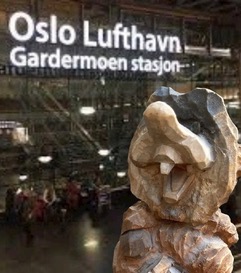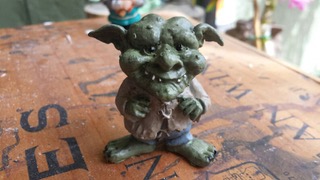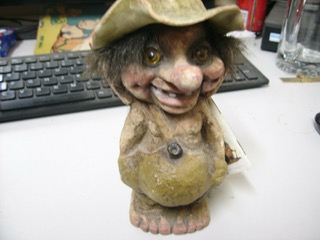By Matthew Newman
“There I was, at the mercy of three monstrous trolls! And they were all arguing amongst themselves about how they were going to cook us, whether it be turned on a spit or whether they should sit on us one by one and squash us into jelly. They spent so much time arguing the wither-tos and why-fors, that the sun's first light cracked over the top of the trees — poof! And turned them all to stone!”
—Bilbo Baggins, Lord of the Rings: The Fellowship of the Ring
Fairies, angels, ghosts, goblins, ghouls, ogres, vampires, werewolves, and spirits; some are biblical, some are mythical. Some hide under the bed, some in abandoned castles or remote corners of the globe. Some are recent inventions, while others are centuries old. We all know that the Yeti is native to the Himalayans and the Bunyip to Australia, while the Sasquatch (or Bigfoot) tends towards the more Alpine climates of North America. The methods for warding off vampires are extensive, and fire seems to be the typical way to dispense with a reanimated mummy. Whether or not we believe in these supernatural beings, it seems as though we all know what they are, where they dwell, and how to avoid them.
Our upcoming production of Henrik Ibsen’s 1876 play Peer Gynt features a well-known, though perhaps less determinate, set of creatures: trolls. The troll is a folkloric monster originating in Scandinavia, typically, believed to live in a deep forest or inside a mountain. It is tremendously big and strong, ugly, hairy, sometimes with more than one head.
But, like any creature whose origins spring from fairy-tale or folklore, the characteristics of the troll are not so easily settled.
In other sources, the troll is described as nearly human in appearance and certainly capable of emotion and social relationships.
Across texts, the troll can be either giant or small, harmless and mischievous or purely malevolent. For Stephen S. Stanton, while the definition of the troll remains diffuse, a few key elements still stand out: “trolls rebel against custom and the social law (sanity) in all its forms [and] stand for the id as opposed to the ego or superego.” These descriptors are all the more interesting when considered alongside the modern parlance, where internet trolling has been given such consideration by some media commentators as to have contributed to the 2016 election of Donald Trump.
Online trolls seem to exist on a similar plane to their etymological counterparts, lurking in dark recesses of the internet, manifesting suddenly as a wildly agitative force, and “writing deliberately inflammatory comments designed to elicit outrage from one’s targets.” Yet even internet trolling is not so clear-cut. Many acts of trolling could be described as malevolent acts, but many more might be chalked up to mere mischief and cunning, to online prowess and a wry disregard for authority.
The staging of Ibsen’s play by Endangered Productions may not involve the exact same feats that have earned this assortment of trolls, both mythical and online, such a reputation, but we are hoping it will stand up to the great Norwegian playwright’s text and remain as mischievous as possible. As the Old King of the Mountain asks: “What is the difference between troll and man?”
Get on our mailing list for details and ticket sales.



